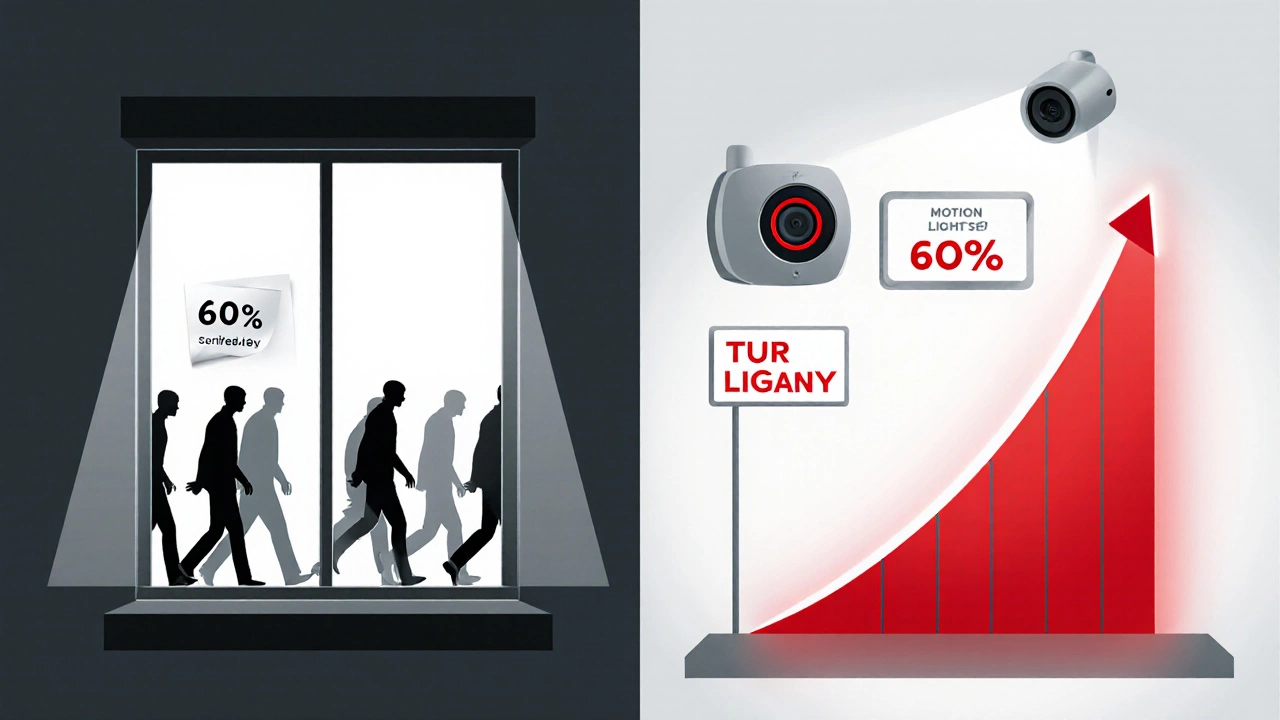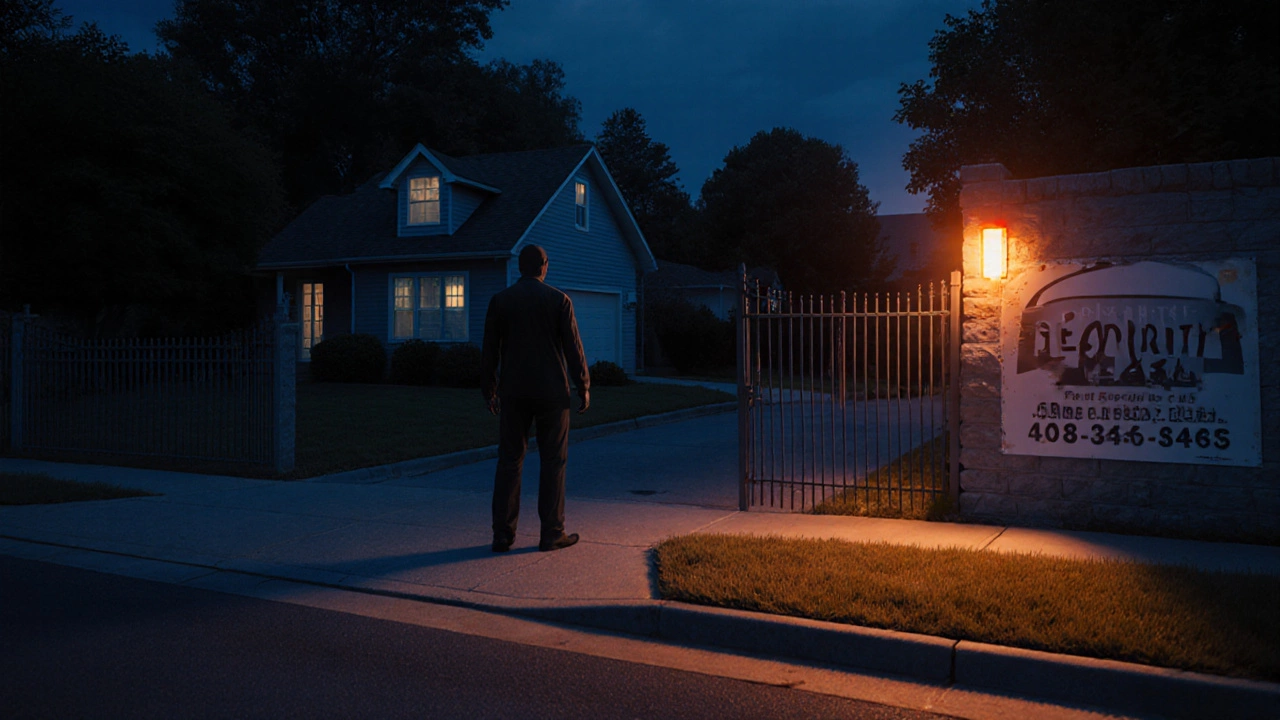Home Security Savings Calculator
Security System Impact Calculator
Estimate your potential savings from home security systems based on actual crime statistics.
$
$
Your Potential Savings
Insurance Savings
Based on 15-20% insurance discount for monitored systems
Property Loss Reduction
Based on 23% lower average loss with security systems
How It Works
Our calculations use real data from the article:
- Insurance savings: 15-20% discount from insurance companies
- Property loss reduction: 23% lower average loss ($2,392 vs $1,842)
- Avoidance rate: 60% for visible signs only
When you hear a siren wail in the night, you feel safe. But do burglars actually care? Is that big sign in your yard, the blinking light on your wall, or the monthly fee for professional monitoring really making your home less attractive to criminals? The answer isn’t guesswork-it’s backed by decades of research, interviews with convicted burglars, and hard crime statistics.
Most Burglars Will Walk Away If They See an Alarm
A 2014 study by the University of North Carolina at Charlotte interviewed 422 incarcerated burglars across three states. The results were clear: 83% of them actively looked for signs of security systems before breaking in. And when they saw one? 60% would immediately move on to another house. That’s not a small number. That’s the majority. It’s not about whether the alarm is armed. It’s about perception. Burglars don’t want to risk getting caught. They want speed, silence, and an easy exit. A visible alarm system-whether it’s a sticker on the window, a yard sign, or a camera mounted on the porch-signals risk. And risk is the one thing they’re trying to avoid.What Happens When a Burglar Already Started Breaking In?
Even if a burglar gets past the initial deterrent and starts trying to break in, alarms still work. The same UNC study found that when a burglar triggers an alarm during a break-in:- 50% flee immediately
- 31% sometimes stop and leave
- Only 13% keep going
Not All Alarms Are Created Equal
A simple sign or decal can deter 60% of burglars. But if you want maximum protection, you need more than just a sticker. The research shows that homes with both visible indicators AND proof of professional monitoring are avoided by 90% of burglars. Here’s why it matters:- Visible signs (yard signs, window decals) = 60% avoidance rate
- Visible signs + professional monitoring (like ADT, Brinks) = 90% avoidance rate
- Self-monitored systems (phone alerts only) = 29% risk reduction
- Professionally monitored systems = 43% risk reduction
Police Response Time Is the Weak Link
Here’s the uncomfortable truth: alarms don’t always stop burglars because police don’t always show up fast enough. In urban areas, the average response time to an alarm is 8.7 minutes. In rural areas, it’s 14.3 minutes. That’s longer than most burglaries take. That’s why 40% of burglars still target homes with alarms-they’ve calculated the odds. But here’s what changes the game: systems with live video verification. Companies like Deep Sentinel now use AI-powered cameras that let monitoring centers see exactly what’s happening before calling the police. With video proof, response times drop to under 3.2 minutes. That’s a game-changer.
Alarm Systems Reduce Loss Even When They Don’t Prevent Burglary
Even if a burglar gets inside, alarms still help. The FBI’s 2023 data shows that homes with security systems experience 23% lower property loss on average. Why? Because alarms make burglars hurry. They grab what they can quickly and run. In homes without alarms, thieves have time to search drawers, break open safes, and take more. The numbers speak for themselves:- Average loss in homes with alarms: $1,842
- Average loss in homes without alarms: $2,392
Alarm Systems Work Best When Combined With Other Measures
An alarm alone isn’t magic. The most effective home security is layered. Security experts agree: alarms work best when paired with:- Reinforced doors with ANSI Grade 1 deadbolts
- Motion-sensor outdoor lighting
- Timers for indoor lights when you’re away
- Collecting mail and packages regularly
Alarm Systems Are Getting Smarter-and More Affordable
Ten years ago, installing a security system cost over $1,200. Today, it’s under $850 on average. Many systems now connect to your phone, let you see live video, and even let you talk to anyone at your door through an app. New tech is making alarms smarter too:- AI-powered cameras reduce false alarms by 72%
- Systems now distinguish between pets and people
- Integration with Alexa and Google Home lets you arm your system with your voice


